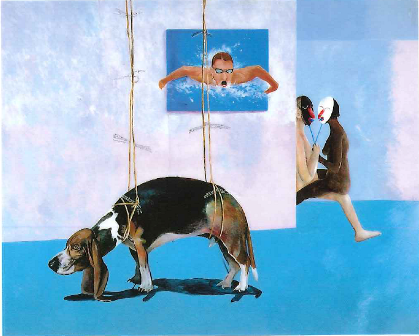Dear Members of the UCT Works of Art Committee,
Today, I saw for myself the blank column where UCT allowed Willie Bester's Sarah Baartman sculpture to stand covered for three years—in violation of the moral rights of the artist—before moving it to storage without notice in October, after the pretext of a brief exhibition. (As you know, the decision to hide the sculpture away had already been taken.) I also saw the blank space where Breyten Breytenbach's Hovering Dog once hung. These spaces should get (bullshit-free) historical markers, along with the blank wall from which Diane Victor’s Pasiphaë was banished in March.
Perhaps you will recall that Hovering Dog was removed from display in 2016 because Ramabina Mahapa complained that it was "a portrait [sic] of a naked white man, on his lap is a black woman, they seem to be having sexual intercourse. The white man has a black mask and the black woman has a white mask."
The nude figures might be slightly too far apart to be having coitus, but one is certainly sitting on the other's lap. In any case, the message is clear: a painting by Breyten Breytenbach depicting physical intimacy across the colour line cannot be displayed. In South Africa! In 2019. At the University of Cape Town.
Are members of the Works of Art Committee free to express their own opinions, or are you controlled by some form of "democratic centralism"? What would happen if a member slipped and publicly opposed censorship? (Censor: to examine in order to suppress ... or delete anything considered objectionable; also: to suppress or delete as objectionable.)
Jaco Bernard-Naude, Andrew Lamprecht, Alison Lewis, Nkule Mabaso, Nomusa Makubu, Amogelang Maledu, Bulumko Mbete, O'Refiloe Mashope, Zethu Matebeni, Jay Pather, Christopher Peter, Philippe-Joseph Salazar, Berni Searle, Alta Steenkamp: Has a single one of you taken a public stand?
How has intolerance prevailed?
William


